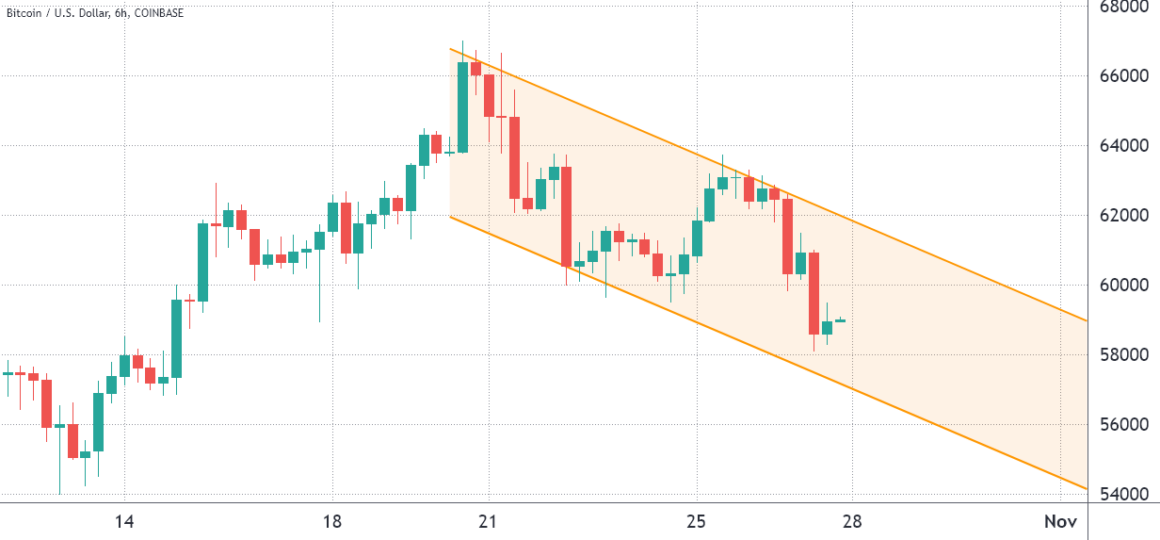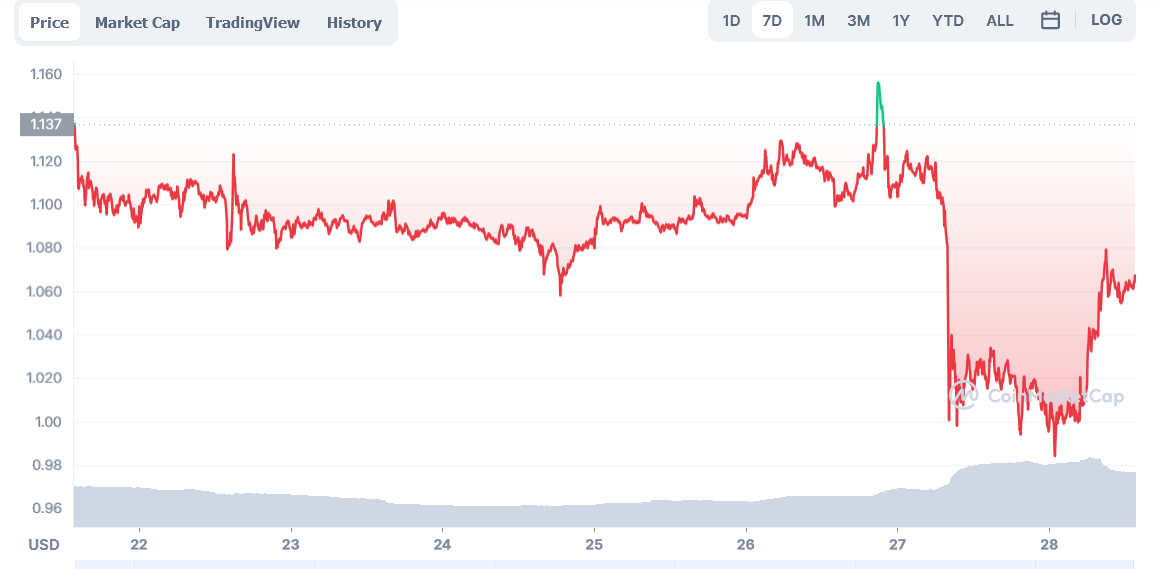Cryptocurrency markets are presently in the midst of a market correction, but that does not mean Bitcoin or its counterparts have lost value. While fiat currencies continue to lose their worth amid inflation, crypto assets remain an attractive investment for those who want long-term cryptocurrency adoption and stability.
The “crypto derivatives market size” is a term used to describe the size of the cryptocurrency market. The data reflects that this market has calmed down since last year, despite the recent dip in bitcoin and altcoin prices.
When looking at the week’s winners and losers, it’s evident that traders took a beating, as the whole crypto market value plummeted by 12.7 percent when Bitcoin fell to $41,000. On Dec. 3, the amount fell from $2.37 trillion to $1.92 trillion, resulting in the liquidation of $2 billion in long future contracts.
 The top winners and losers from the top 80 coins are shown below. Nomics is the source of this information.
The top winners and losers from the top 80 coins are shown below. Nomics is the source of this information.
Over the last week, the price of Bitcoin (BTC) has retraced 14.6 percent, thus lagging the larger altcoin market. Part of the reason for this unexpected shift may be attributed to the success of decentralized apps, which outperformed the rest of the market. According to the data, Ether (ETH) fell 6.0 percent, Binance Coin (BNB) fell 7.3 percent, and Solana (SOL) fell 7.8 percent.
OKEx’s OKB token (OKB) and Bitfinex’s UNUS are among the top gainers this week (LEO). These may have profited from the lack of a US organization since regulatory uncertainty in the area continues to grow. Furthermore, Ethereum’s $40 or higher network transaction fees benefitted scaling solutions Polygon (MATIC) and Algorand (ALGO). The growing adoption of Polygon RPC endpoints has also played a role in improving network performance and attracting more users.
Terra (LUNA) was among the best performers last week, thanks to its built-in token burn mechanism, which dramatically cut the supply. Meanwhile, once D’Cent wallet added support for SIP010 tokens, Stacks (STX), formerly known as Blockstacks, soared.
Last week was a letdown for sharing solutions.
Three decentralized sharing systems, Theta Network (THETA), Filecoin (FILE), and Internet Computer, were among the lowest performances (ICP). They weren’t alone; cryptocurrencies below the top-80 in the sectors also collapsed. Ankr Network (ANKR) was down 31.8 percent and Siacoin (S.C.) was down 34 percent.
After Binance successfully introduced SANTOS, an independent soccer fan token, Chiliz (CHZ) faced direct competition. Chiliz’ platform was originally designed to offer exclusive discounts, services, and voting for its fan tokens, however the project has since expanded into the non-fungible NFT market. However, once soccer star Neymar debuted a collection with NFTStar, that project lost traction.
Despite being one of the worst performances, decentralized exchange aggregator 1inch Network (1INCH) has closed a $175 million Series B funding round, with the proceeds going toward expanding the protocol’s usability.
Tether’s premium and the perpetual premium of the futures both held up nicely.
The difference between China-based peer-to-peer (P2P) trading and the official US dollar currency is measured by the OKEx Tether (USDT) premium, which has declined somewhat in the last week.
 USDT peer-to-peer premium on OKEx vs. USD. OKEx is the source of this information.
USDT peer-to-peer premium on OKEx vs. USD. OKEx is the source of this information.
The indicator now has a value of 98 percent, which is somewhat negative, indicating a lack of demand from crypto traders to convert cash into stablecoins. Even at its peak during the last two months, it failed to reach 99 percent, so Chinese participants aren’t too optimistic about the market as a whole.
The total futures open interest dropped by 28 percent to $16.7 billion as a result of last week’s downturn. Nonetheless, the move was predicted, given that the overall market capitalization retraced and $3.9 billion in liquidations occurred throughout the week.
More crucially, after the price drop on December 3, financing rates on Bitcoin and Ethereum futures swiftly rebounded. Even while longs (buyers) and shorts (sellers) in each futures contract are always matched, their leverage fluctuates.
As a result, in order to balance their risk, exchanges will charge whichever party is employing greater leverage a financing rate, which will be paid to the opposite side.
 8-hour financing rates for BTC and ETH perpetual futures. Coinglass.com is the source of this information.
8-hour financing rates for BTC and ETH perpetual futures. Coinglass.com is the source of this information.
On the 3rd and 4th of December, the 8-hour funding rate fell below zero, indicating a slight negative trend. Shorts (sellers) were paying the fees, as evidenced by a negative funding rate, but the trend faded as BTC and ETH prices bounced 15% off their lows.
Although the above data may not seem to be positive, given Bitcoin’s significant losses this week, the general market structure has held up well. If the situation was worse, a 99 percent Tether premium or a positive eternal funding rate would be unthinkable.
The author’s thoughts and opinions are purely his or her own and do not necessarily represent those of Cointelegraph. Every investing and trading decision has some level of risk. When making a choice, you should do your own research.
Watch This Video-
The “crypto derivatives examples” is a market that has been very volatile, with bitcoin and altcoins taking a hit. The derivatives data reflects a calmer market.
Related Tags
- crypto derivatives regulation
- crypto derivatives explained
- crypto derivatives tokens
- crypto derivatives vs spot
- crypto derivatives exchange
Our Founder and Chief Enthusiast: With a background that’s a wild mix of tech enthusiasm, finance, and a short stint believing blockchain was a new martial arts technique, Matej is the heart and soul of TheBlockchainBrief.com. He’s got more passion for cryptocurrency than most people have for coffee, and that’s saying something.


